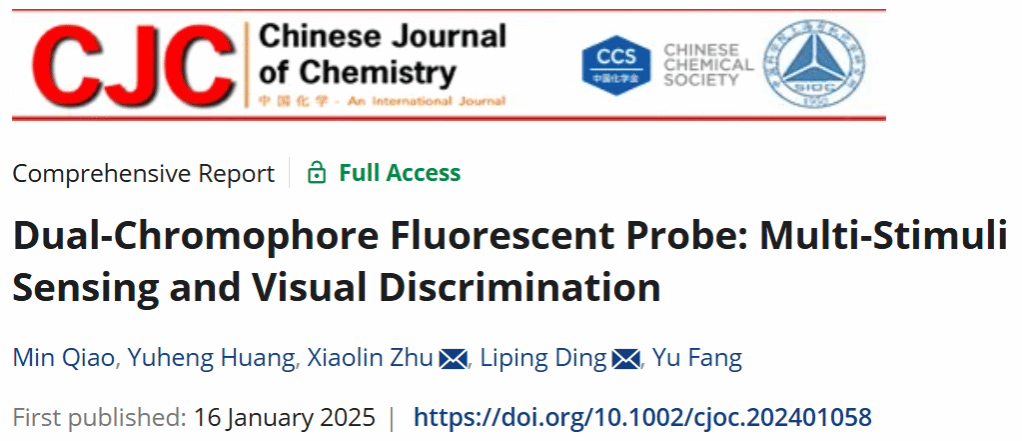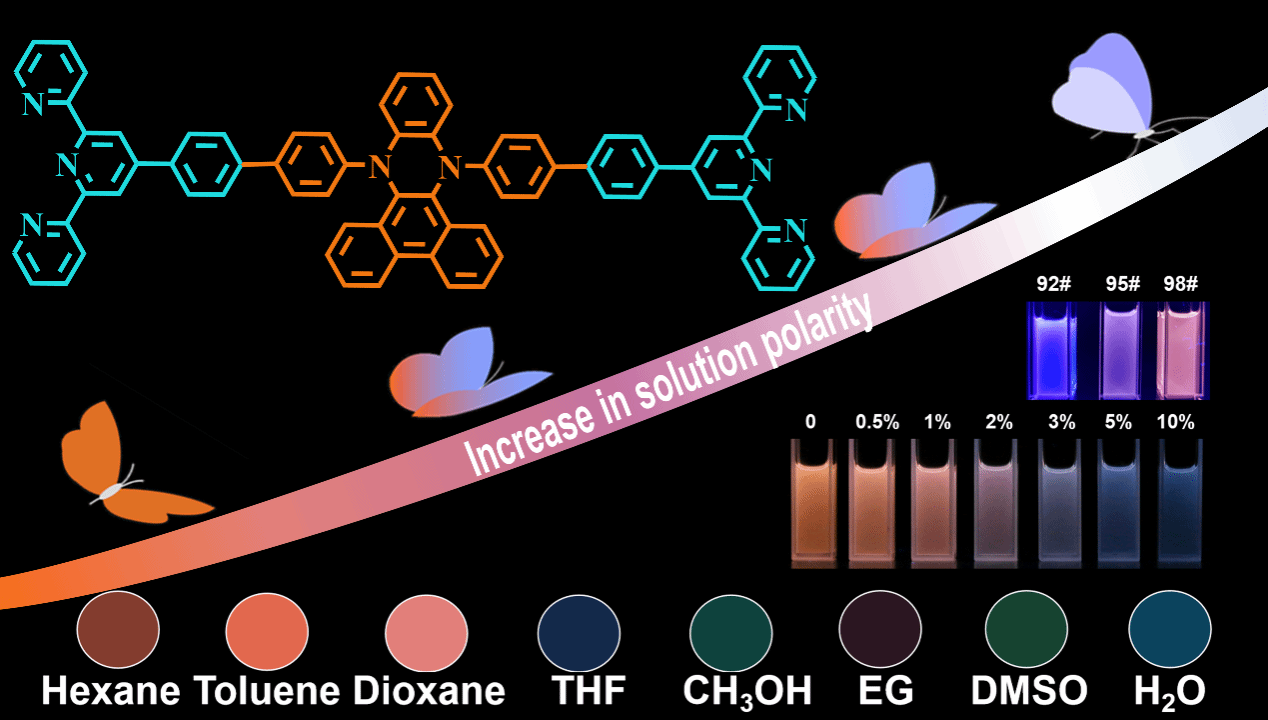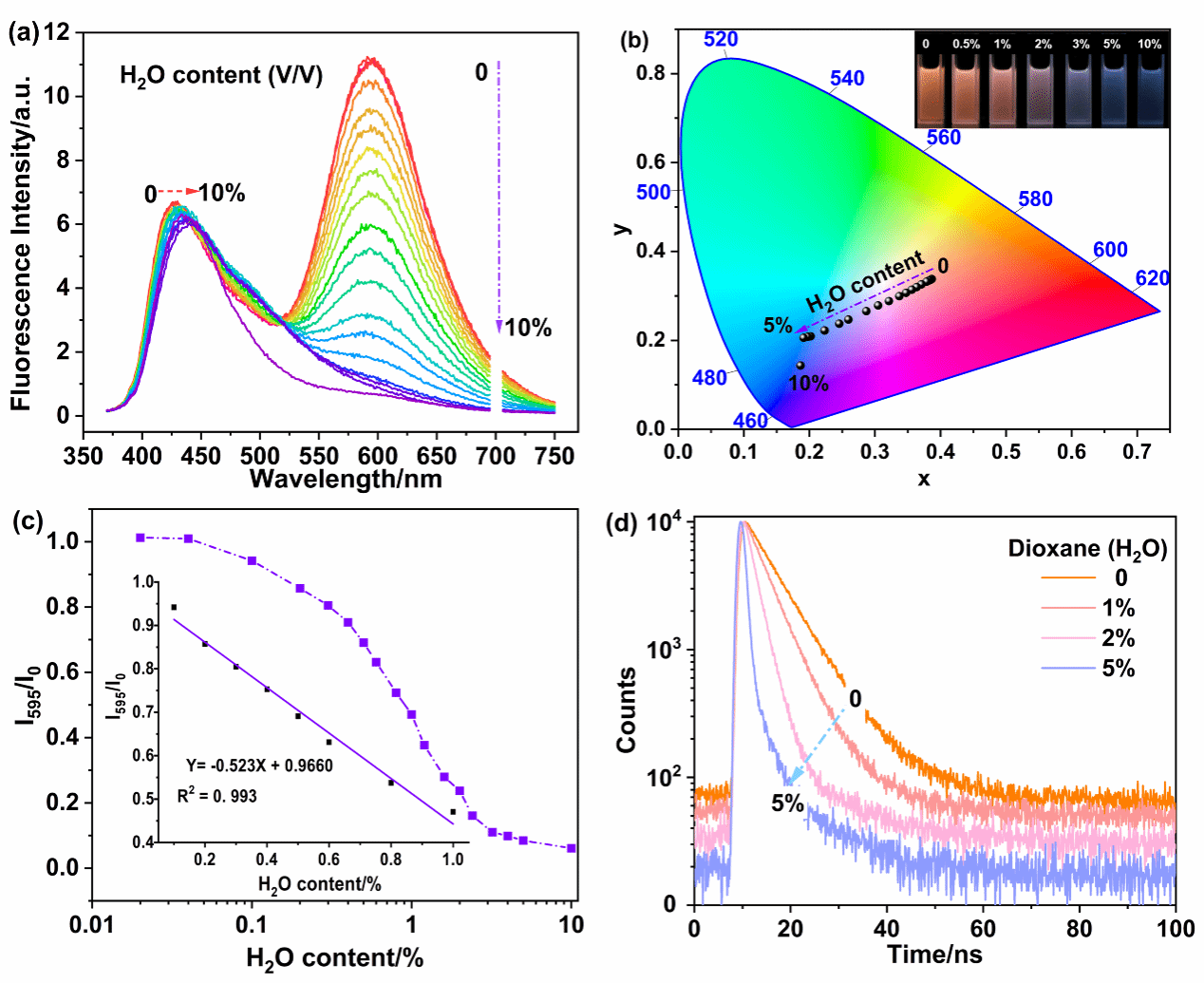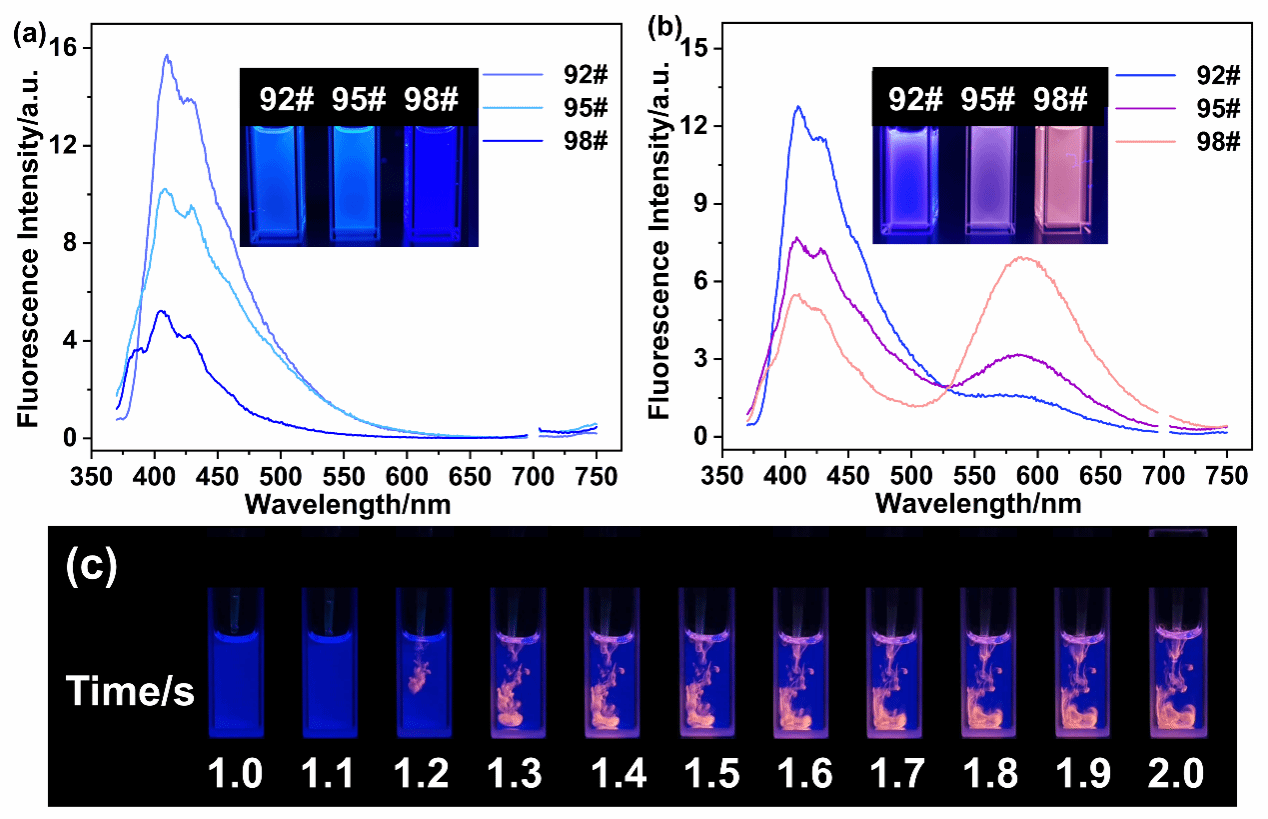
Min Qiao, Yuheng Huang, Xiaolin Zhu*, Liping Ding*, Yu Fang. Chin. J. Chem. DOI: 10.1002/cjoc.202401058

Fluorescent visualization sensing technology has become an important tool in modern sensing techniques due to its high sensitivity, real-time monitoring capability, and intuitive visualization. It is widely applied across various fields. With the increasing demand for multifunctional detection, fluorescent visualization has gradually evolved from a single stimulus response to a multi-stimulus response. However, these molecules still face many challenges in practical applications. Therefore, it is particularly important to develop fluorescent molecules that possess high versatility and multifunctionality to meet the increasingly complex and diverse practical needs.
In this study, we engineered a dual-chromophore fluorescent probe, DBT, that responds to multiple stimuli by integrating functional groups with unique characteristics. Notably, the probe DBT exhibits pronounced bimodal emission under specific conditions, with its fluorescence shifting between red and blue in response to alterations in solution polarity and dipole moment variations. Significantly, DBT facilitates the differentiation and visual identification of eight solvents and permits the quantitative detection of trace water content in organic solvents. Additionally, it allows for the visual detection of gasoline. The present work provides a simple and effective multifunctional fluorescent probe through the combination of fluorophores with different properties, which is expected to be extended to more stimulus-responsive applications. With the advantages such as fast response time, wide visualization and a broad colour change range, it has promising prospects for visualization applications in fields such as environmental monitoring and chemical analysis.

Figure 1 (a) Fluorescence emission spectra, and (b) CIE chromaticity coordinates of DBT in 1,4-dioxane with varying ratios of water at a concentration of 1×10-5 mol/L (Inset: Fluorescence photos in 1,4-dioxane solutions with varying ratios of water (0-10%) under 365 nm UV light irradiation); (c) Plot of the Fluorescence intensity of DBT at 595 nm with the water content in 1,4-dioxane; (d) Lifetimes of DBT at 1×10-5 mol/L in dioxane solutions with varying water ratios monitored at 600 nm.

Figure 2 Fluorescence emission spectra of (a) pure gasolines (92#, 95#, 98#) and (b) gasolines (92#, 95#, 98#) with DBT (1×10-5 mol/L) excited at 350 nm, inset: Images of (a) 92#, 95#, 98# gasolines and (b) 92#, 95# ,98# gasolines with DBT under UV light (365 nm). (c) Fluorescence color change over time of DBT add into 98# gasoline with 365 nm UV lamp.
First Author: Min Qiao, Postdoctoral Researcher, Shaanxi Normal University
Correspondence Authors: Prof. Liping Ding and Associate Researcher Zhu Xiaolin, Shaanxi Normal University
Full Text Link: https://onlinelibrary.wiley.com/doi/10.1002/cjoc.202401058